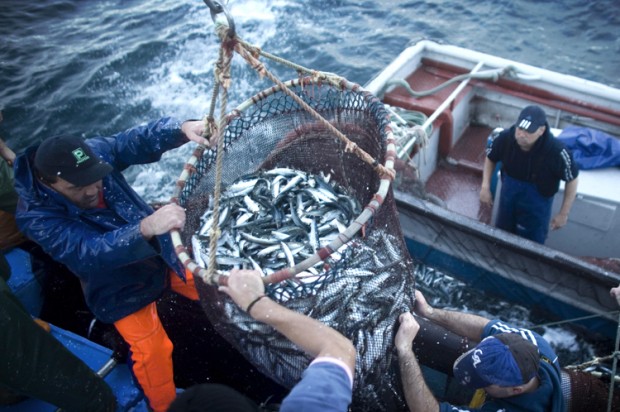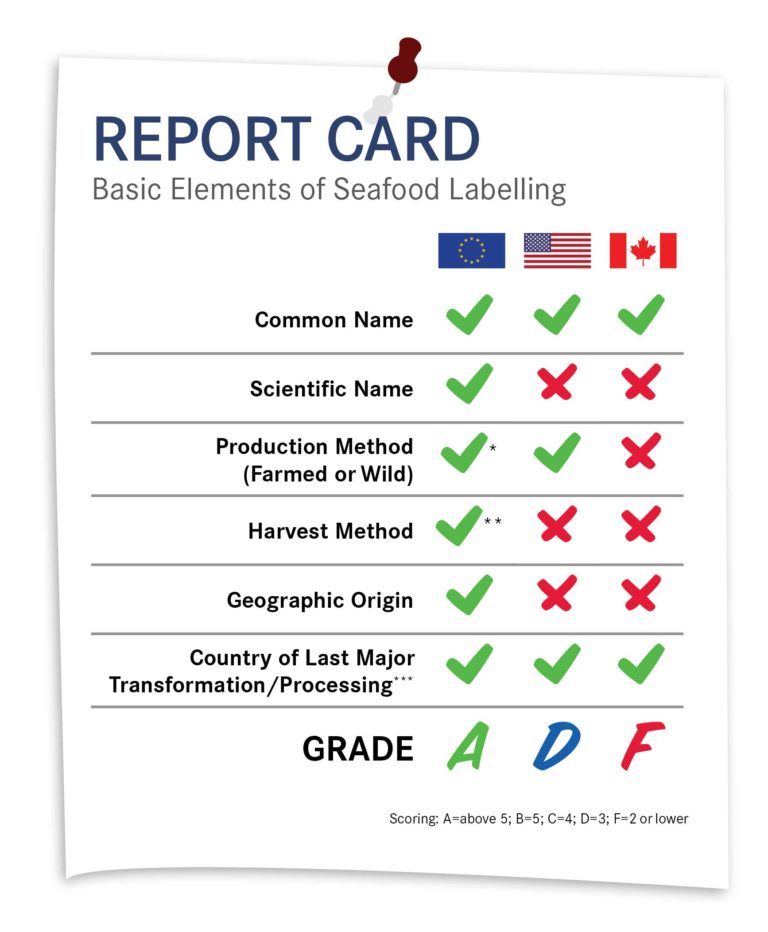Whole in the Water
Well-Known Member
Here's something else the salmon feedlot supporters can 'chew on'....!
http://www.salon.com/2013/08/17/sustainable_seafood_is_a_fantasy/

Saturday, Aug 17, 2013 10:00 PM UTC Sustainable seafood is a fantasy
By Lindsay Abrams
 Sardine fishermen (Credit: Reuters/Nacho Doce)
Sardine fishermen (Credit: Reuters/Nacho Doce)
Consumers have proven that they can hear about the horrific factory farms and still eat chicken for dinner. Personally, I find it hard to feel sympathy for animals, but I became a vegetarian after seeing enough evidence of the huge environmental impact of meat consumption, and some worrying predictions about antibiotic resistance, to convince me it was the responsible thing to do.
Almost four years later, I don’t really crave white or red meat. But I have welcomed fish back into my diet. I missed seafood, and was swayed by the health benefits of omega-3s. Fish makes you happy, it keeps you young, and it tastes really good.
I also felt assured I’d be able to limit my diet to sustainable fish. I downloaded the Monterey Bay Aquarium Seafood Watch app to my iPhone. And on my first night as an official pescetarian, at a Japanese restaurant, I confidently whipped it out to look up the fish options on the menu.
It immediately became clear that I didn’t have much to work with. I wanted the sea bass, but, as I remember it, the menu left it at that. Sea bass. Was it Asian, European or Chilean? Farmed or wild caught, and by longline or gillnet? According to my app, the bass could be either very sustainable or the worst thing I could possibly order, denoted with a big red dot. As my companions asked our waiter about the size of their portions or details of the daily special, I politely inquired if he knew where the fish came from. He told me he did not.
*
Ecologist Carl Safina, a writer and the founder of Blue Ocean Institute, developed the first sustainable seafood guide in the late 1990s. Before that, there was really no such thing as “sustainable” seafood: “If a piece of fish landed on your plate, you just ate it,” he said. “It was like bread. You didn’t talk about it.”
When we talk about sustainable seafood these days, we’re mostly concerned with whether a population is being overfished. According to the United Nations’ 2012 “State of World Fisheries and Aquaculture” report, about 85 percent of the world’s fish stocks are fully or overexploited, depleted or recovering from depletion. We no longer take it as a given that there are plenty of fish in the sea, and some go so far as to suggest that our generation may be the last to enjoy seafood.
The creators of consumer guides to sustainable seafood, of which there are now many, pay careful attention to overfishing. They also look at whether the methods used to catch fish are harming the aquatic habitat, and if they cause a lot of bycatch – the inadvertent snaring of unwanted fish, dolphins and sea turtles. Some of the guides investigate whether fisheries are well-managed. Other factors, like how suppliers deal with waste and whether they use harmful chemicals, are often taken into consideration as well.
“Consumers making the conscious choice to try and buy more sustainable seafood is an important first step,” Tim Fitzgerald, a senior policy specialist who runs the Sustainable Seafood Program at the Environmental Defense Fund (EDF), told me. And these organizations do seem to be doing everything in their power to arm consumers with the tools they need to make these choices. The EDF, for example, takes the extra step of providing a version of its guide written in the language of sushi. (When you order “tako,” what you’re getting is octopus, which, by the way, is a very bad choice.)
But in many cases, providing enough information for the consumer to make a truly informed decision is next to impossible. For instance, while there’s a clear distinction between Pacific and Atlantic salmon – Atlantic is always farmed and thus, always bad – whether my Monterey Bay app categorizes my Pacific salmon as a “best choice” or a more cautious “good alternative” depends on how it was caught. There’s really no way, said Safina, for me, or even the restaurant or supermarket I’m purchasing my fish from, to know that.
I wasn’t able to get in touch with the Monterey Bay Aquarium to talk about the way in which they see their guide’s ultimate utility. However, I noticed an extra “consumer note” attached to its entries on salmon. “Buyer beware!” it reads. “Different species of salmon are sold under many market names – and several are available from farmed and wild sources.” Wild and farmed salmon, said Fitzgerald, are among the most commonly mislabeled products. Call a fillet “wild,” after all, and you can sell it at a premium.
“You can’t rely on anybody selling you fish to be truthful 100 percent of the time,” Safina said. This isn’t limited to how the fish are caught; the sustainable option you pick might not be sustainable at all, because it’s an entirely different fish.
In a sweeping investigation of seafood fraud, the international organization Oceana used DNA testing to uncover mislabeling at restaurants and grocery stores “both in the United States and abroad at levels ranging from 25 to more than 70 percent.” Farmed tilapia masqueraded as red snapper, overfished Atlantic halibut claimed to be from the Pacific, and mercury-rich escolar passed itself off as white tuna. Sushi, according to their report, is a particularly dicey product. When you order a roll, they found, you’re more likely than not getting something different from what it says on the menu, especially if it says snapper or tuna. Of the 1,200 samples from 21 U.S. states that were tested, snapper was snapper only 13 percent of the time.
http://www.salon.com/2013/08/17/sustainable_seafood_is_a_fantasy/

Saturday, Aug 17, 2013 10:00 PM UTC Sustainable seafood is a fantasy
By Lindsay Abrams

Consumers have proven that they can hear about the horrific factory farms and still eat chicken for dinner. Personally, I find it hard to feel sympathy for animals, but I became a vegetarian after seeing enough evidence of the huge environmental impact of meat consumption, and some worrying predictions about antibiotic resistance, to convince me it was the responsible thing to do.
Almost four years later, I don’t really crave white or red meat. But I have welcomed fish back into my diet. I missed seafood, and was swayed by the health benefits of omega-3s. Fish makes you happy, it keeps you young, and it tastes really good.
I also felt assured I’d be able to limit my diet to sustainable fish. I downloaded the Monterey Bay Aquarium Seafood Watch app to my iPhone. And on my first night as an official pescetarian, at a Japanese restaurant, I confidently whipped it out to look up the fish options on the menu.
It immediately became clear that I didn’t have much to work with. I wanted the sea bass, but, as I remember it, the menu left it at that. Sea bass. Was it Asian, European or Chilean? Farmed or wild caught, and by longline or gillnet? According to my app, the bass could be either very sustainable or the worst thing I could possibly order, denoted with a big red dot. As my companions asked our waiter about the size of their portions or details of the daily special, I politely inquired if he knew where the fish came from. He told me he did not.
*
Ecologist Carl Safina, a writer and the founder of Blue Ocean Institute, developed the first sustainable seafood guide in the late 1990s. Before that, there was really no such thing as “sustainable” seafood: “If a piece of fish landed on your plate, you just ate it,” he said. “It was like bread. You didn’t talk about it.”
When we talk about sustainable seafood these days, we’re mostly concerned with whether a population is being overfished. According to the United Nations’ 2012 “State of World Fisheries and Aquaculture” report, about 85 percent of the world’s fish stocks are fully or overexploited, depleted or recovering from depletion. We no longer take it as a given that there are plenty of fish in the sea, and some go so far as to suggest that our generation may be the last to enjoy seafood.
The creators of consumer guides to sustainable seafood, of which there are now many, pay careful attention to overfishing. They also look at whether the methods used to catch fish are harming the aquatic habitat, and if they cause a lot of bycatch – the inadvertent snaring of unwanted fish, dolphins and sea turtles. Some of the guides investigate whether fisheries are well-managed. Other factors, like how suppliers deal with waste and whether they use harmful chemicals, are often taken into consideration as well.
“Consumers making the conscious choice to try and buy more sustainable seafood is an important first step,” Tim Fitzgerald, a senior policy specialist who runs the Sustainable Seafood Program at the Environmental Defense Fund (EDF), told me. And these organizations do seem to be doing everything in their power to arm consumers with the tools they need to make these choices. The EDF, for example, takes the extra step of providing a version of its guide written in the language of sushi. (When you order “tako,” what you’re getting is octopus, which, by the way, is a very bad choice.)
But in many cases, providing enough information for the consumer to make a truly informed decision is next to impossible. For instance, while there’s a clear distinction between Pacific and Atlantic salmon – Atlantic is always farmed and thus, always bad – whether my Monterey Bay app categorizes my Pacific salmon as a “best choice” or a more cautious “good alternative” depends on how it was caught. There’s really no way, said Safina, for me, or even the restaurant or supermarket I’m purchasing my fish from, to know that.
I wasn’t able to get in touch with the Monterey Bay Aquarium to talk about the way in which they see their guide’s ultimate utility. However, I noticed an extra “consumer note” attached to its entries on salmon. “Buyer beware!” it reads. “Different species of salmon are sold under many market names – and several are available from farmed and wild sources.” Wild and farmed salmon, said Fitzgerald, are among the most commonly mislabeled products. Call a fillet “wild,” after all, and you can sell it at a premium.
“You can’t rely on anybody selling you fish to be truthful 100 percent of the time,” Safina said. This isn’t limited to how the fish are caught; the sustainable option you pick might not be sustainable at all, because it’s an entirely different fish.
In a sweeping investigation of seafood fraud, the international organization Oceana used DNA testing to uncover mislabeling at restaurants and grocery stores “both in the United States and abroad at levels ranging from 25 to more than 70 percent.” Farmed tilapia masqueraded as red snapper, overfished Atlantic halibut claimed to be from the Pacific, and mercury-rich escolar passed itself off as white tuna. Sushi, according to their report, is a particularly dicey product. When you order a roll, they found, you’re more likely than not getting something different from what it says on the menu, especially if it says snapper or tuna. Of the 1,200 samples from 21 U.S. states that were tested, snapper was snapper only 13 percent of the time.


